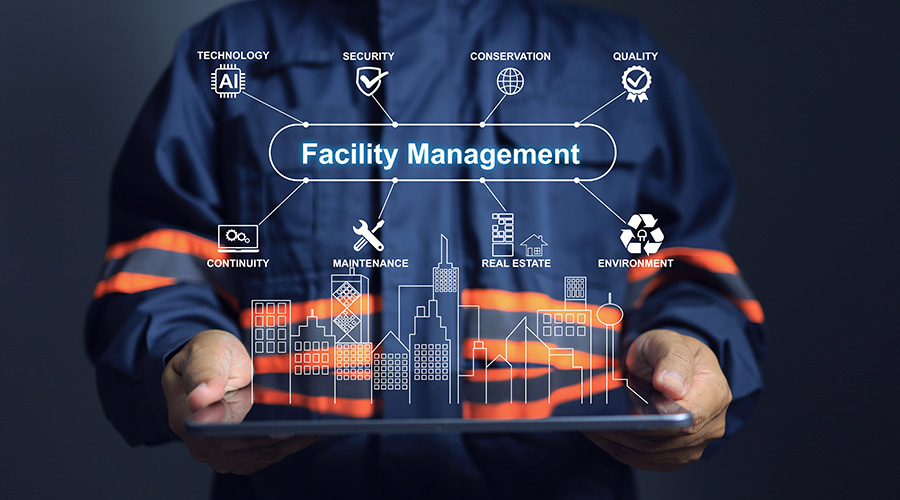Many Ways to Get Started
By Greg Zimmerman, Executive Editor
A critical part of starting to measure any aspect of facility performance is keeping the end in mind – that is, how the data ultimately will be used. Measuring is necessary for management, but managing what is measured should be the first thought for a data-deficient facility executive. Many data-adept facility executives advise learning to crawl before trying to walk.
“I think you concentrate on a category at a time and get as good as you possibly can in that category,” says Robert Gross, principal of facility management at The Vanguard Group.
For many facility executives, cost is a major obstacle to developing metrics, so it’s important to keep data-gathering simple and inexpensive. Such is the case for Vic Atherton, associate vice president of facilities administration at the University of Miami. He operates his facility department on a tight budget and is hard-pressed to spend money on sophisticated data gathering systems.
“If data gathering isn’t simple and automatic, we won’t do it,” says Atherton. For instance, Atherton tracks energy and water costs by entering data from utility bills into a spreadsheet each month. From that, reports can be generated that compare usage over any given time. “It’s a very simple, quick way to get a handle on things,” he says. “This isn’t rocket science.” The data ends up in a manageable format and allows Atherton to spot and mitigate energy-use anomalies at any of his facilities.
In some cases, the purpose of the metrics or the nature of the organization make it impossible to start small. When Art Elman, vice president, corporate real estate and facilities at ADP, wanted to get a handle on what the company was spending on facility-related items, he had to collect data from all over the $8.5 billion organization as a basis for metrics.
“It was a challenge because we’re a large company and we didn’t keep all data uniformly,” he says. “We are a decentralized organization, so we had to gather data from each profit center.”
This meant culling data such as lease information from the legal department and the number of employees per building from human resources. Elman also began drilling down into the ledgers of each business unit to figure out how it defined and itemized facility costs.
“The end result was an executive summary for how we use buildings and what opportunities there are,” says Elman. “Are there cost centers that are really out of whack? Do we use space efficiently? It has really helped us to start portfolio planning.”
Elman says he now collects information from the various departments on an annual basis and has taught them how to report the data so that it’s in a form that makes it easier for him to use it to manage costs.
New Goals
Even with sophisticated data gathering systems already in place, there are still plenty of opportunities to get started with new metrics. Jim Bullock, director of facilities at The Getty Center, a Los Angeles art museum and research complex, set a goal to be certified under the LEED for Existing Buildings green building rating system.
Bullock saw LEED certification as a way to get credit for green strategies already in place. He had sophisticated metrics for energy use and staff productivity, but these measures didn’t document all of the museum’s green achievements. Developing new metrics was a major step toward LEED certification.
For example, Bullock began tracking construction waste to meet LEED requirements. Every 90 days or so, the museum changes exhibits, so keeping better track of partitions, dry wall and other construction materials not only helped garner a LEED-EB credit, it also yielded an unexpected benefit. “In California, we found quite a market for construction waste,” says Bullock. “So overall, there was a cost benefit.”
Bullock also began measuring occupant recycling, both for LEED and because “it’s the right thing to do.”
“LEED forces you to start thinking about things differently,” says Bullock. “It’s a good framework for getting started.”
How It’s Done: Building A Metric |
| |
Metric |
Kilowatt-hours (kwh) per gross sq. ft. |
|
| |
Identify Purpose |
To indicate how much electricity is used |
|
| |
Decide Data
to Include |
• Gross sq. ft.
• Electrical kwh
|
|
| |
Decide Data
to Exclude |
• Gross sq. ft. associated with parking
• Gross sq. ft. with utilities budgets in facilities accounts other than Kaiser Foundation Hospitals
|
|
| |
Define Calculation |
Annualized year to date kwh consumption divided by gross sq. ft. To annualize kwh consumption, average year-to-date consumption ((YTD/no. months to date)*12). Using this average as a 12-month estimate, divide by gross sq. ft.
|
|
| |
Frequency & Audience |
• Monthly
• Facility directors, facility managers, operations support leaders, hub directors, national facilities services consultants
|
|
| |
Actions That Might Be Taken |
• Identify building and physical plant energy conservation retrofits (improve load factor, reduce consumption)
• Identify and correct plant operations parameters which have a negative impact on electrical consumption (improve load factor, reduce consumption)
• Align utility rates/tariffs with load profiles
|
Adapted from material provided by Kaiser Permanente National Facilities Services
HOW WE DEVELOP AND USE METRICS:
Related Topics:











